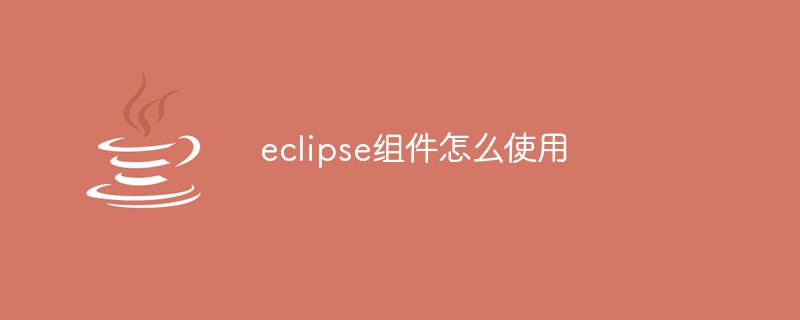
The Eclipse IDE is composed of components, including the editor (for writing and editing code), views (providing code information), perspectives (workspace layout), plug-ins (enhanced functionality), and debuggers ( diagnostic error). Together, these components support software development. Specific steps include: create or open a project, use the editor to write code, open a view to obtain code information, customize the perspective layout, install plug-in extensions, use the debugger to diagnose errors, and use other components to enhance the development experience.

Eclipse Component Usage Guide
The Eclipse Integrated Development Environment (IDE) is composed of multiple components that together Provides rich functionality to support software development. The following details how to use these components:
Editor
The editor is used to write and edit code. It provides features such as syntax highlighting, auto-completion, and error detection. To open the editor, use "File" > "New" > "Project" in the menu bar.
View
View displays additional information about the code structure and information. Common views include:
To open a view, use "Window" > "Show View" in the menu bar.
Perspective
Perspective is the layout of the Eclipse workspace. It can contain multiple editors and views. You can create a custom perspective by using "Window" > "New Perspective" in the menu bar.
Plug-ins
Plug-ins are add-ons that extend Eclipse functionality. They can add new features, support other programming languages, or integrate external tools. To install a plug-in, use "Help" > "Install New Software" in the menu bar.
Debugger
The debugger allows you to step through your code and examine the values of variables. To start the debugger, set a breakpoint in the editor and use "Run" > "Debug" in the menu bar.
Other Components
In addition to these main components, Eclipse also contains other useful features, such as:
Steps to use Eclipse components
The above is the detailed content of How to use eclipse components. For more information, please follow other related articles on the PHP Chinese website!
 The latest ranking of the top ten exchanges in the currency circle
The latest ranking of the top ten exchanges in the currency circle
 What to do if the CPU usage is too high
What to do if the CPU usage is too high
 What currency is USDT?
What currency is USDT?
 How to set up hibernation in Win7 system
How to set up hibernation in Win7 system
 What are the java flow control statements?
What are the java flow control statements?
 Python online playback function implementation method
Python online playback function implementation method
 matlab colormap function usage
matlab colormap function usage
 Connected but unable to access the internet
Connected but unable to access the internet




